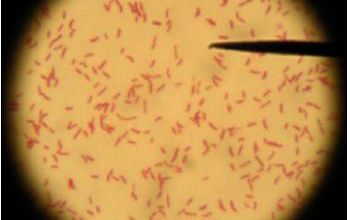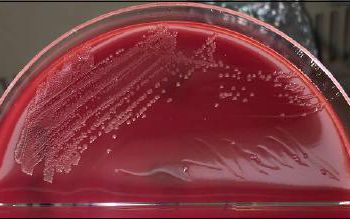Arcobacter butzleri (Aliarcobacter butzleri)
-
General information
Taxonomy
Family: Campylobacteriaceae
Formely: Arcobacter ► human infections
Genus: Aliarcobacter butzleri
- A. butzleri
- A. cryaerophilus
Natural habitats
In the intestinal tract of animals.
Man is infected by direct contact with infected animals or by consumption of contaminated water or food, especially bovine and porcine.
Clinical significance
A. butzleri has been isolated from patents with bacteremia, endocarditis, peritonitis, and diarrhea.
A. cryaerophilus isolated from patients with diarrhea and maybe underrecognized if appropriate culture conditions are not used.
-
Gram stain
Gram negative curved, S-shaped, spiral rods or helical
1-3 x 0.2-0.9 µm
Rods may form spherical or coccoid bodies in old cultures or cultures exposed to air for prolonged periods.
-
Culture characteristics
-
Aerotolerant
BA: colonies may be low, flat, grayish, finely granular, and translucent appearance with an irregular edge, and a tendency to swarm and merge or may be round, 1-2 mm diameter, raised, convex, smooth, shiny, with an entire, translucent edge and a darker, opaque center.
Usually weakly α-hemolytic.
aeroob/30ºC
Butzler agar = Campylobacter Selective Agar
After 24-48 hours flat, moist and shiny colonies.
In the thick areas inoculated colonies get a metallic gray blue tint.
They are able to swarm on the culture medium in part or sometimes in whole.
Sometimes round colonies with smooth edges, shiny and with a diameter of 2-3 mm.
CCDA agar = Campylobacter Blood-Free Selective Medium
Same as Butzler
anaeroob/35-37ºC: growth
-
-
Characteristics
-
References
James Versalovic et al.(2011) Manual of Clinical Microbiology 10th Edition
Karen C. Carrol et al (2019) Manual of Clinical Microbiology, 12th Edition


